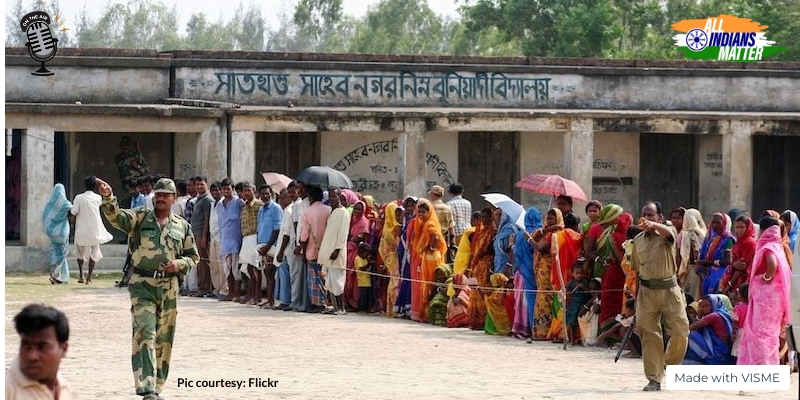Tushar Gandhi
March 19, 2021
Recently, Prime Minister Narendra Modi inaugurated the centenary commemoration of the Chauri Chaura incident – a year in advance. Interestingly, last year was the centenary of the Non-Cooperation Movement –the first non-violent Satyagraha for freedom launched and spearheaded by Mahatma Gandhi. There was no official commemoration. Yes, there was a pandemic but there wasn’t even an official mention of it.
This year, Pradhan Sevak Shree suddenly realised that Chauri Chaura was a major incident in our fight for freedom and it needed to be commemorated. So, in the midst of a raging pandemic, a sinking economy and the farmers’ protest, he rushed there to launch a commemoration of the centenary – which is actually next year. This year was the 99th anniversary. The incident occurred on February 4, 1922, do the math.
Pradhan Sevak Shree needed a distraction and he created one. After all, the Non-Cooperation Movement was a Congress-led movement – why would he want to commemorate it?
The tragedy is that the Congress too forgot the anniversary. It was important not just because it is part of the dharohar of the Congress. It was the Congress that passed a resolution for the Non-Cooperation Movement at a special session in Calcutta in September 1920 with Lala Lajpat Rai as president. It ratified the proposal to launch the movement nationwide under the leadership of Gandhi.
Unfortunately, the Congress also forgot its glorious past. Fortunately, the people did not forget it. As Pradan Sevak Shree commemorated the Chauri Chaura incident a year early, citizens commemorated the Non-Cooperation Movement through a non-violent satyagraha against the Citizenship Amendment Act and the National Registry of Citizens, and continue to commemorate it in the form of the non-violent farmers’ protests.
What was the Chauri Chaura Incident?
Chauri Chaura is a tiny village in Gorakhpur District of Uttar Pradesh (known as the United Provinces before Independence).
The Non-Cooperation Movement had swept through the nation and pushed the British to the backfoot. They did not know how to respond to this unique movement of mass disobedience. Violence was only committed by the police of the Raj.
On February 2, 1922, the police beat up participants holding a peaceful satyagraha in the market. They brutally beat the satyagrahis and locked up their leaders. There was anger in the community. On February 4, a mob marched towards the market square and the police again beat up the protestors and locked up their leaders in the local chowky. Some protestors gathered outside, demanding their release while a large group marched on the market square. A posse of armed police was dispatched to disperse them. The crowd was shouting slogans against the Raj. To frighten it, the police fired warning shots in the air. This angered the mob and it retaliated with stones and bricks.
Soon, an Indian Inspector ordered his men to open fire, killing three and injuring several. This provoked the protestors into an all-out attack on the police.
There are many versions of what happened next. According to one, the police ran out of ammunition and retreated to the chowky. According to another, the mob chased the policemen to the chowky. The mob set fire to the chowky and, when the policemen rushed out, they were slaughtered and thrown back into the flames.
A larger force arrived and the town’s residents were rounded up. More than 200 were tried in the Gorakhpur Sessions Court and an English Judge sentenced 170 to be hanged.
A nationwide furore followed and, finally, the Allahabad High Court, hearing an appeal, sentenced 19 accused to death and others to jail sentences of various terms.
The incident was a tragedy because Indians killed fellow Indians and it only ended up strengthening the British.
The immediate result was that the British, who were till then fumbling to respond to the movement, found an advantage. The British press highlighted Chauri Chaura to discredit the Freedom Movement, ridiculing Gandhi and his “farcical” non-violence. Gandhi took personal responsibility for this aberration and decided that he had failed to judge the preparedness of his people to fight the battle in the only manner acceptable to him.
So, he went on a five-day fast to atone for his “sins”, insisting that the Non-Cooperation Movement cease. Congress leaders tried to convince Bapu to withdraw the order. Most felt that the British were on the verge of capitulating but Bapu refused to budge – for him, the means were as important as the ends, and independence by violent means was unacceptable. The result was that the Non-Cooperation Movement was halted in its tracks and independence delayed.
Those who paid the price
As I said, the tragedy of Chauri Chaura was that Indians killed fellow Indians. All the 22 or 23 policemen killed were Indian and all those hanged were Indian too.
The Indian policemen killed were:
- Inspector Gupteshwar Singh
- Sub-Inspector Prithvi Pal
- Constable Bashir Khan
- Constable Kapil Dev Singh
- Constable Lakhai Singh
- Constable Raghuvir Singh
- Chowkidar Visheshwar Singh
- Constable Mohammed Khan
- Constable Hasan Khan
- Constable Gadabaksh Khan
- Constable Jama Khan
- Chowkidar Manglu Chaubey
- Constable Rambali Pandey
- Constable Kapil Dev
- Constable Indrasan Singh
- Constable Ramlakhan Singh
- Constable Mardana Khan
- Constable Jagdev Singh
- Constable Jaigai Singh
- Chowkidar Wazir
- Chowkidar Ghisai Ram
- Chowkidar Katwaru Ram
- Chowkidar Jathai Ram was thrown into the burning chowki but he survived. The relieving police force rescued pulled him out of the flames but he succumbed in hospital.
Nineteen were sentenced to death by hanging:
- Nazar Ali
- Bhagwan Ahir
- Lal Mohammed
- Shyamsundar
- Abdullah
- Dudhi Singh
- Kali Charan
- Lauti Kumar
- Mahadev Singh
- Meghu Ali
- Raghuvir
- Ramlakhan
- Ramroop
- Sahdev
- Rudali
- Mohan
- Sampat
- Shyam Sundar
- Sitaram
Fourteen Indians were sentenced to life in jail; 19 to eight years’ imprisonment; 57 to five years; 20 to three years imprisonment; three to two years; 38 were acquitted.
The 19 awarded death were hanged between July 2 and 11, 1923.
While commemorating Chauri Chaura, Pradhan Sevak Shree forgot that if the Non-Cooperation Movement had succeeded in winning freedom for India in the early 1920s, Partition would not have happened.
What must be understood about Chauri Chaura is that, till it happened, the nationwide movement was largely disciplined and non-violent. For more than a year, the Raj had been shamed and almost defeated by this agitation.
Chauri Chaura was a case of mob lynching, not a revolution. If anything, it was a setback to the Freedom Movement. It’s not surprising that colonial collaborationists chose to commemorate it over the more significant centenary of the Non-Cooperation Movement.
Since they are now in power, they have begun to rewrite history in earnest. Commemorating Chauri Chaura is the first step to write a more convenient history of the Freedom Movement.
Tushar Gandhi, great grandson of the Mahatma, is an activist, author and president of the Mahatma Gandhi Foundation. Reach him here: gandhitushar.a@gmail.com.
Cover picture: Wikimedia Commons






